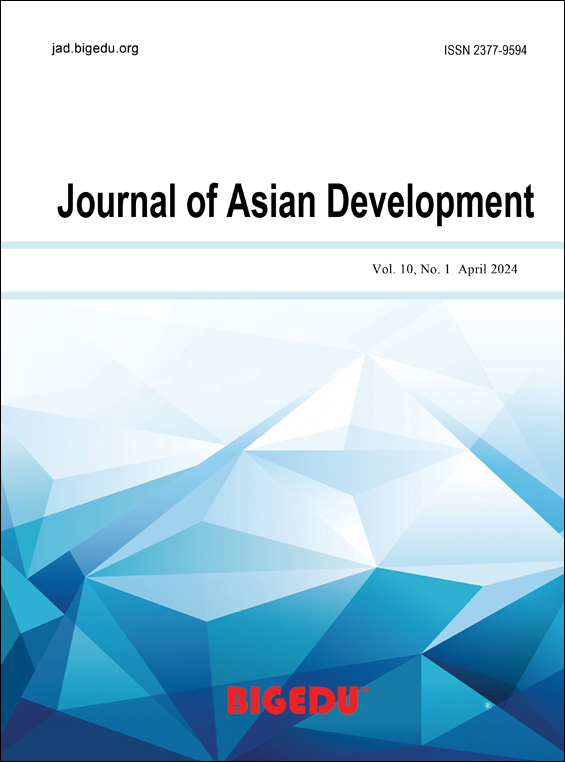Malaysia’s Energy-Growth Nexus and Environmental Kuznets Curve Hypothesis: Empirical Analysis Using the VECM and ARDL Cointegration Techniques
DOI:
https://doi.org/10.52941/jad.v8i1.22Keywords:
Energy-growth nexus, Environmental Kuznets curve (EKC), Globalization, Structural break, VECM, ARDL, Granger Causality, MalaysiaAbstract
This paper investigated Malaysia’s energy-growth nexus and environmental Kuznets curve (EKC) hypothesis over the period 1971-2014 by taking the globalization variables of trade openness and foreign direct investment (FDI) and the structural break dummy of the Asian financial crisis of 1997 into estimation. To give interference, the Granger causality tests were implemented in the framework of two cointegration techniques: vector error correction model (VECM) and autoregressive distributed lag (ARDL). As per Malaysia’s energy-growth nexus, referring to different results of the two approaches, we concluded that the presence of the energy-growth nexus was statistically confirmed, but it has not been fully established yet in the country. On the other hand, both the VECM and ARDL results provided the same conclusion for Malaysia’s EKC hypothesis, that is, in the initial stage, as the higher economic growth, the less CO2 emissions, but after a threshold, the higher economic growth, the more CO2 emissions.
Downloads
Published
How to Cite
Issue
Section
License
Copyright (c) 2021 Journal of Asian Development

This work is licensed under a Creative Commons Attribution 4.0 International License.
Copyrights of all articles published in Bigedu Foundation are retained by the authors, with first publication rights granted to the journal. The journal/publisher is not responsible for subsequent uses of the work.
All articles are published under the Creative Commons Attribution (CC-BY) license.
Authors have the rights to reuse, republish, archive, and distribute their own articles after publication, and undertake to permit others to distribute, remix, adapt, and build upon this work non-commercially provided the original work is properly cited. The full guidance that applies to the CC-BY license can be found at http://creativecommons.org/licenses/by/4.0/







